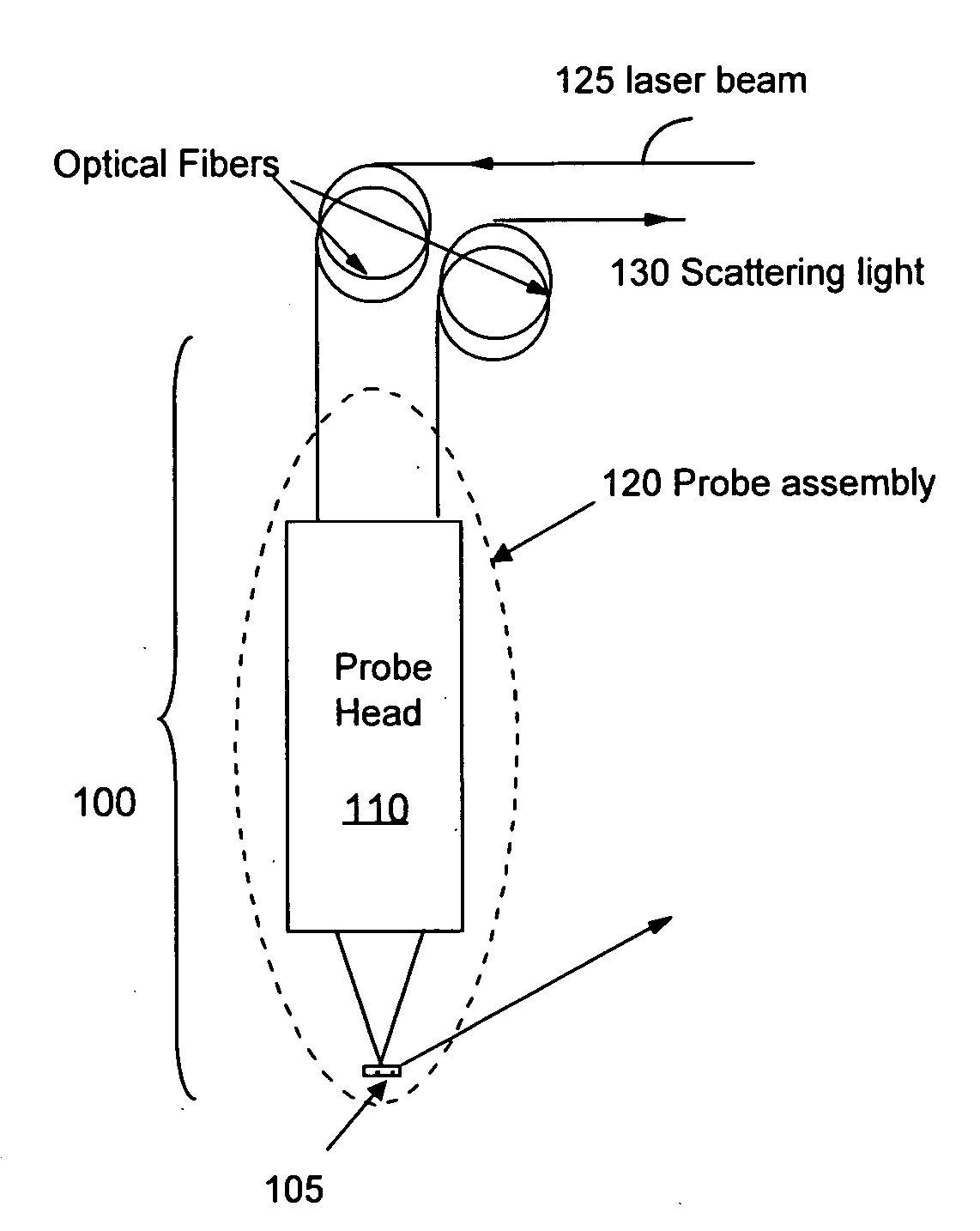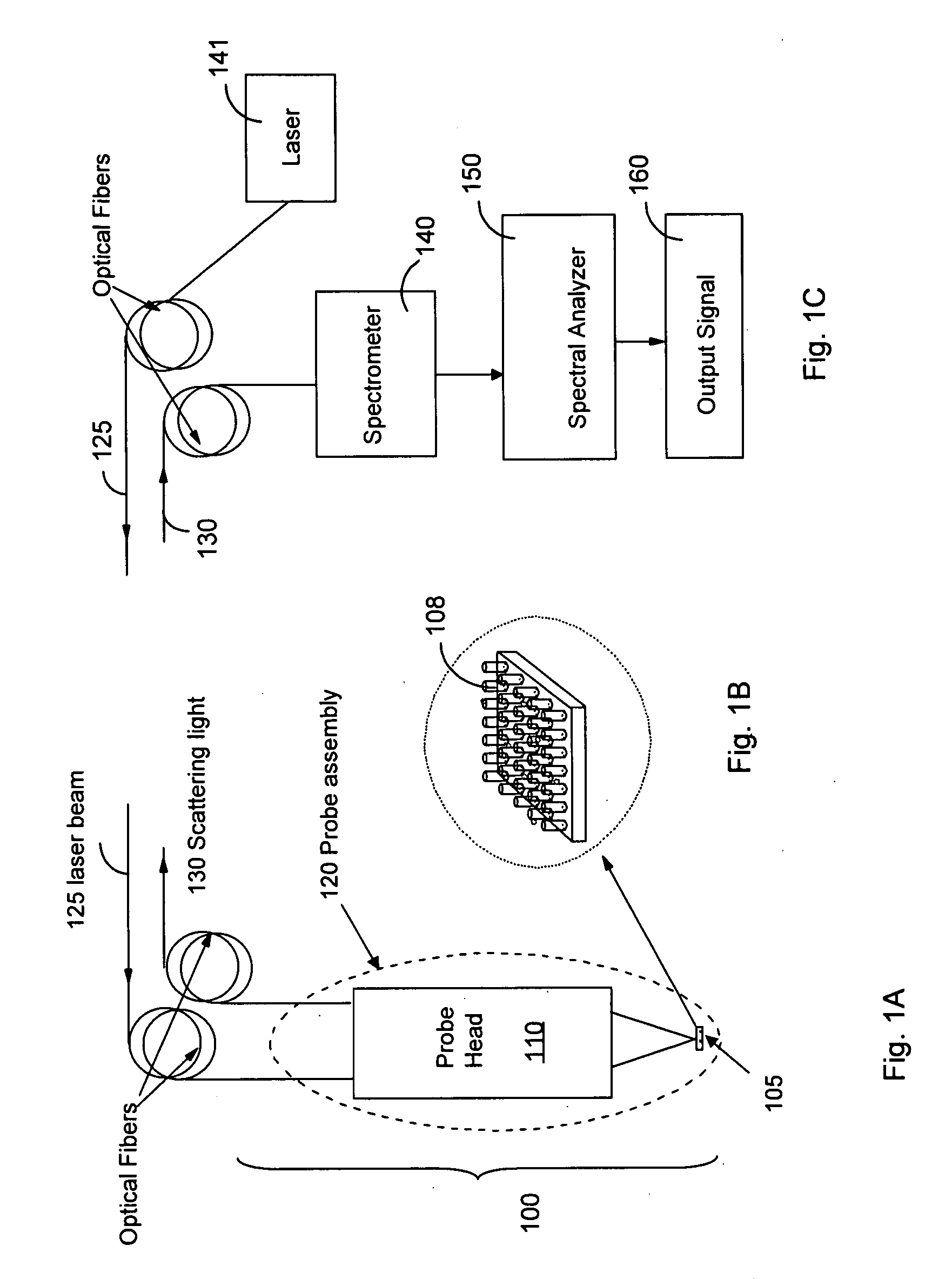Non-invasive disease diagnosis using light scattering probe
a light scattering probe and non-invasive technology, applied in the field of non-invasive disease diagnosis, can solve the problems of limited success of conventional raman spectroscopy, weak raman scattering signal for trace chemical detection, and limited application of conventional raman sensors
- Summary
- Abstract
- Description
- Claims
- Application Information
AI Technical Summary
Benefits of technology
Problems solved by technology
Method used
Image
Examples
Embodiment Construction
[0047]Referring to FIG. 1A, a light scattering probe 100 includes a probe head 110 and a sensor 105 (such as a RamanNanoChip™). As shown in FIG. 1B, a sensor 105 includes a plurality of nano rods 108 (or holes). A body fluid is obtained from a patient or an illicit drug user and applied to the sensing surfaces of the sensor 105. Examples of the body fluid can include blood, saliva, urine, serum, tear, sweat, and stomach fluid. The probe head 110 and the Sensor 105 are enclosed in a probe assembly 120. The probe assembly 120 can be depressurized by a vacuum pump to reduce contamination of the sensing surfaces for foreign substance.
[0048]A laser beam emitted by a laser 141 is guided by optical fibers 125 to illuminate the sensor 105, as shown in FIG. 1C. The probe head 110 is positioned adjacent to the sensor 105. In the present application, the term RamanNanoChip™ refers to a sensor comprising a nano-scale surface structure that is configured to adsorb molecules of a chemical, biolog...
PUM
 Login to View More
Login to View More Abstract
Description
Claims
Application Information
 Login to View More
Login to View More - R&D
- Intellectual Property
- Life Sciences
- Materials
- Tech Scout
- Unparalleled Data Quality
- Higher Quality Content
- 60% Fewer Hallucinations
Browse by: Latest US Patents, China's latest patents, Technical Efficacy Thesaurus, Application Domain, Technology Topic, Popular Technical Reports.
© 2025 PatSnap. All rights reserved.Legal|Privacy policy|Modern Slavery Act Transparency Statement|Sitemap|About US| Contact US: help@patsnap.com



